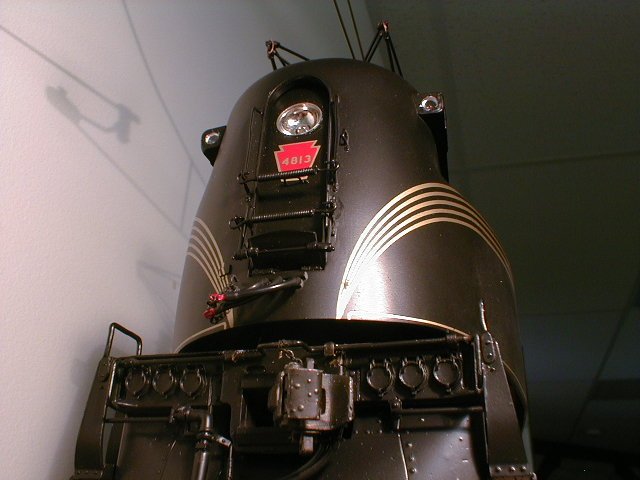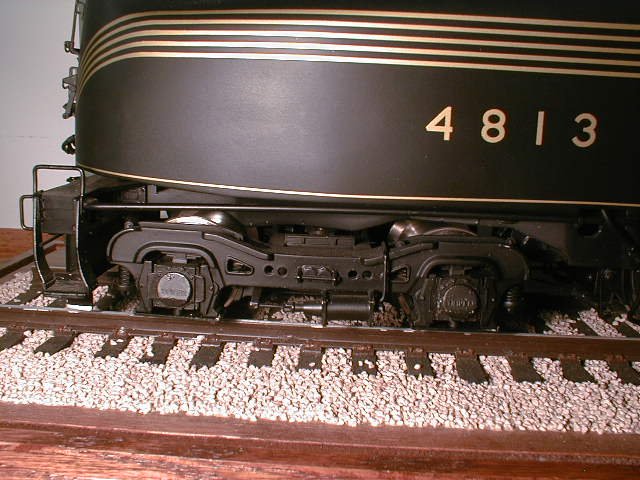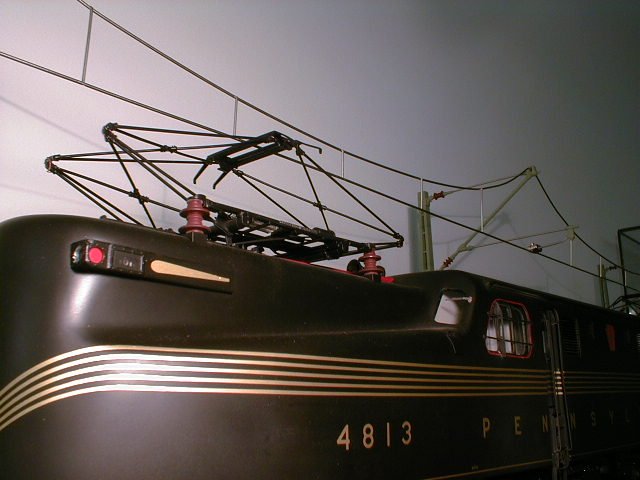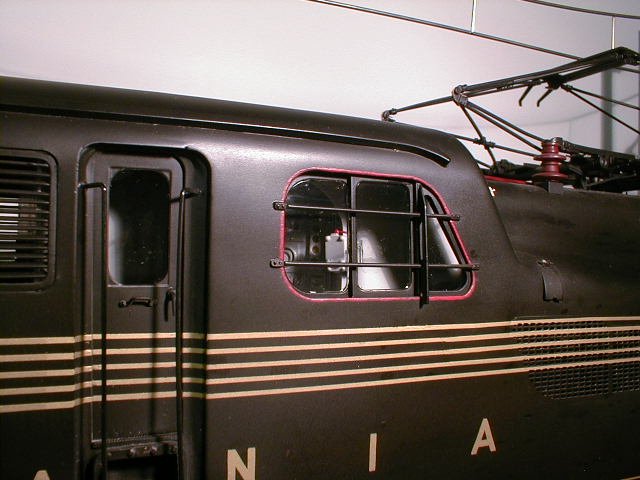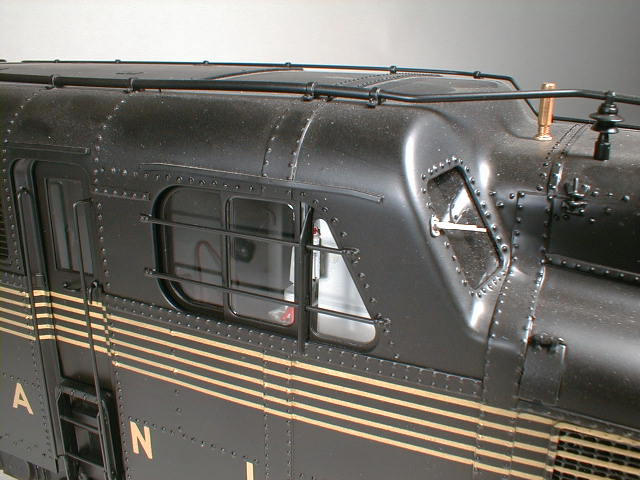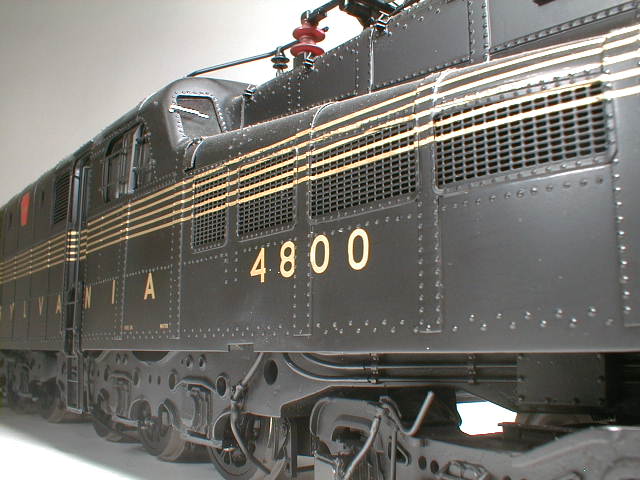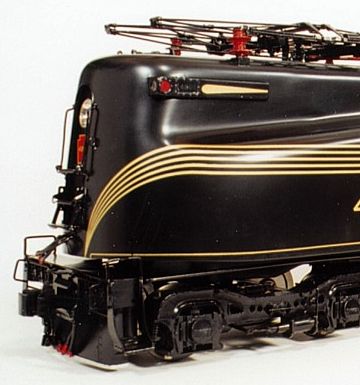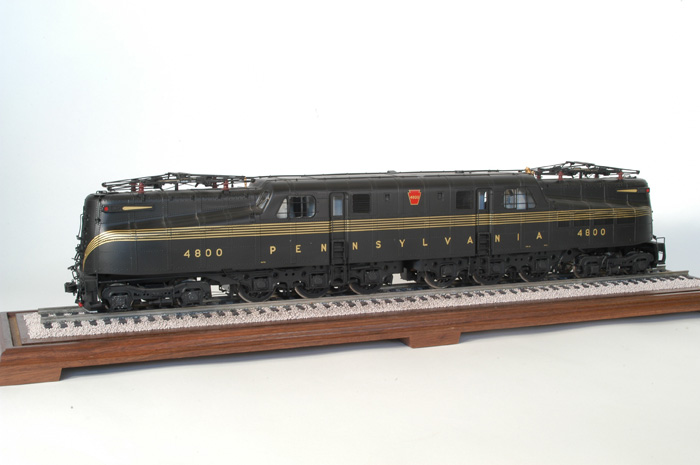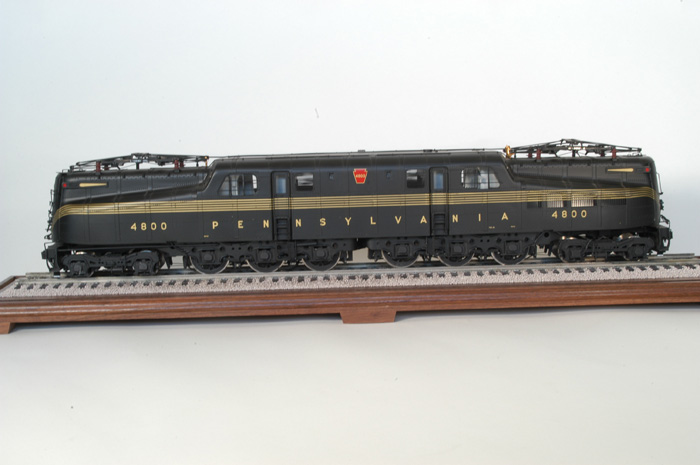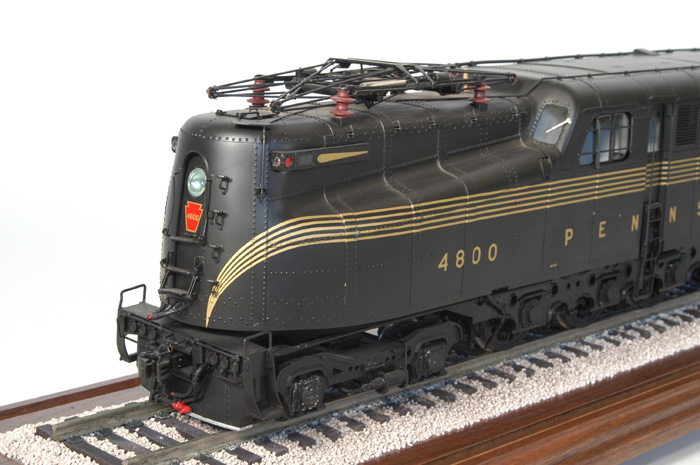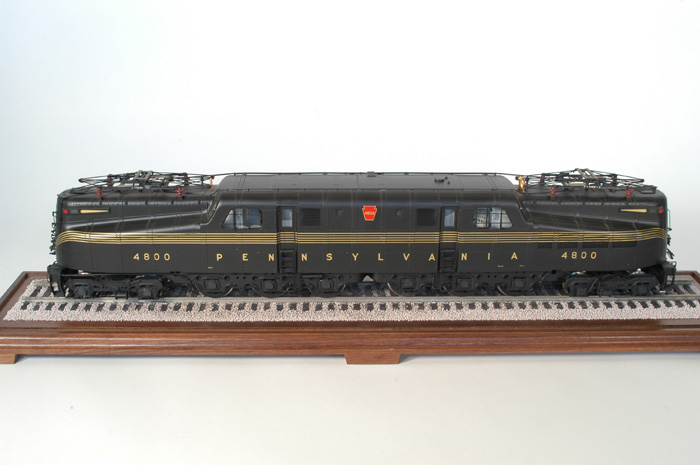GG1
Pennsylvania Railroad GG1 Electric – Brunswick Green
- Scale: 1:32
- Release: 1991
- Limited Edition: 139
- Model Size: 30”L x 4”W x 7”H
- Base Type: Mahogany
- Base/Case Size: 34”L x 8”W x 13”H
- Availability: Sold Out
Pennsylvania Railroad GG1 Electric – Tuscan Red (not pictured)
- Scale: 1:32
- Release: 1991
- Limited Edition: 10
- Model Size: 30”L x 4”W x 7”H
- Base Type: Mahogany
- Base/Case Size: 34”L x 8”W x 13”H
- Availability: Sold Out
Pennsylvania Railroad GG1 Electric – N 4800 (Old Rivets)
- Scale: 1:32
- Release: 1991
- Limited Edition: 10
- Model Size: 30”L x 4”W x 7”H
- Base Type: Mahogany
- Base/Case Size: 34”L x 8”W x 13”H
- Availability: Sold Out
Pennsylvania Railroad GG1
The first streamlined electric locomotive and one of the most handsome, reliable, and enduring designs ever produced was the Pennsylvania Railroad’s magnificent GG1. In 1928, the Pennsy began the massive project of electrifying its eastern lines, which it continued throughout the great depression. This involved not only erecting overhead wiring from New York to Washington and Harrisburg but also increasing clearances, upgrading track, and expanding the right of way to six tracks through the Newark, New Jersey bottleneck along its broadway.
As it approached completion, the project also prompted the development of a new generation of electric locomotives. In 1934, two prototypes were ordered for testing: No. 4800, a rigid frame Pennsylvania design and No. 4899, an articulated GG1, based on a design from the New Haven Railroad. The bi-directional, center-cab GG1 proved clearly superior in head-to-head trials. It generated 4,620 continuous hp and was capable of 8,000 hp in the short term, spreading its 460,000 lbs. over a length of 79½ feet in a 2-C+C-2 wheel arrangement. Renumbered as No. 4800, it was eventually followed by 138 sisters.
But first, the Pennsylvania invited noted industrial designer Raymond Loewy to review the design. He recommended that they weld the entire body of the locomotive rather than rivet together overlapping metal sheets, as had been done with the prototype. He also recommended other changes, the cumulative effect of which were to improve aerodynamics and reduce maintenance costs and applied five gold stripes to the Brunswick Green body in an understated cat whiskers design, which was intended as a safety measure – to increase the visibility of an approaching engine.
On January 28, 1935, Old Rivets (as No. 4800 was later called) made a round trip test run between Washington and New York. On a bitterly cold day, it averaged of 73 mph and reached a top speed of 102. By August, 57 GG1s were in service, eventually reducing the New York–Washington trip to 3½ hours, thanks to the acceleration provided by their short term horsepower rating.
In 1953, No. 4876 suffered brake failure and overran the end of track in Washington’s Union Station, sinking through the concourse floor and into the basement (there it was – cut into sections, hauled out, and eventually returned to service). In 1958, extreme cold produced a snow so granular that it swirled through the GG1s’ air-intake filters, then melted and shorted out their traction motors. As many as 70 GG1s went out of service concurrently, causing the Pennsy’s worst-ever failure of passenger service.
Otherwise, the 139 GG1s were a total success, operating reliably for almost fifty years between New York, Washington, and Harrisburg. In 1952, some were painted in Tuscan Red for the new Senator and Congressional Limited; later, they appeared in a variety of paint schemes for Pennsylvania successors Penn Central, Conrail, New Jersey Department of Transportation and Amtrak, for whom they ran east to New Haven. In 1976, three-quarters of them were still in service and Loewy, whose autobiography was entitled “Never Leave Well Enough Alone” nonetheless reflected, “if we had to redesign it today, after forty years, I don’t know what I would change. I probably wouldn’t change anything.” Their last run was in 1983. Several have been preserved.
Fine Art Models
The Pennsylvania GG1 was Fine Art Models’ first 1:32 scale, Gauge 1 model. We reproduced all 139 locomotives in Brunswick Green, each with its own road number and correct builder’s plate. The original five-stripe cat whiskers as well as the simplified one-stripe versions are represented. We also produced 10 locomotives in Tuscan Red and 10 “Old Rivets” locomotives. Our GG1s’ twelve drive wheels are powered by two 19-volt Pittman ball bearing flywheel motors. Each model includes total cab detail with lighted instruments; doors, windows and inspection covers that open; fully operating pantographs; individually-sprung ball bearing journals; and complete frame and brake detail.
Each GG1 is showcased on an electrified display case with hand-laid rail on wood ties, ballast, and catenary towers and wires. Options included our N5 Cabin Car on an enlarged display base or seven-passenger car consist of the 1938 Broadway Limited as pulled by the GG1. In addition, a full size lithograph of the builder’s plans, suitable for framing, and a seventy-four page book detailing the history of these wonderful locomotives, complimented the GGI scale model.
References
Zimmermann, Karl R., The Remarkable GG1, New York, Quadrant Press, 1977
